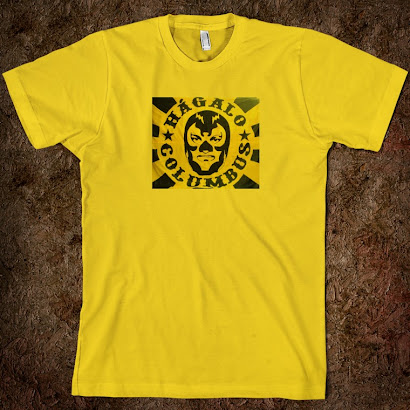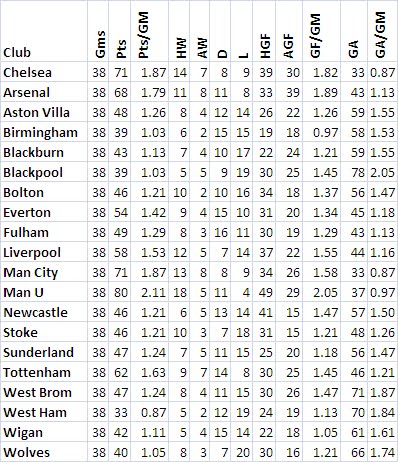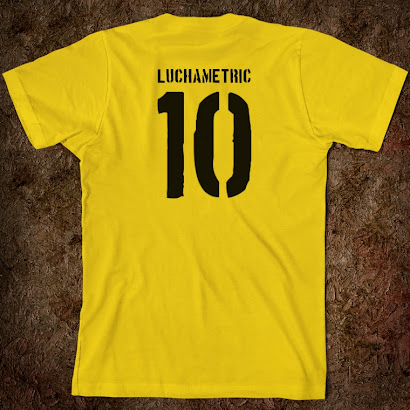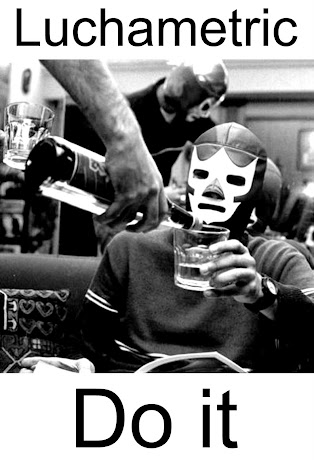El Luchador and his comrade, El Chupacabra, continue to pore over MLS statistics at our Advanced Institute for Luchametric Studies. The goal is to develop statistical tools that are soccer-specific which will aid in our understanding and enjoyment of the beautiful game. We also hope to assist those who chose to wager on world futball--in jurisdictions where such activity is legal – to make better-informed bets.
We offer our latest finding because it confirms something many of us have suspected, and because when taken in total with other knowledge and statistics, could form the basis of more productive wagers.Which team in MLS can fairly be given the title of Major League Soccer’s Biggest Bunch of Hacks?
The dirty thugs of Real Salt Lake!As the table below details, Salt Lake has consistently racked up the greatest number of Infraction Points (a measure of both yellow cards and red cards [IP=YC +(2*RC)]) over the last two and half seasons. Chivas is a close second, and as we shall see, a team whose play is perhaps the most troubling.
The table below represents complete data from 2007 and 2008 along with the projected total number of IPs each team will generate by the end of 2009 based on a 30 game season.
| Club | 2007 | 2008 | 2009 Projected | Three Year Total |
| Salt Lake | 169 | 65 | 76 | 310 |
| Chivas USA | 131 | 84 | 79 | 294 |
| Kansas City | 144 | 57 | 77 | 278 |
| Dallas | 146 | 70 | 58 | 274 |
| New York | 98 | 76 | 68 | 242 |
| Chicago | 110 | 69 | 62 | 241 |
| D.C. | 103 | 78 | 60 | 241 |
| Toronto | 130 | 62 | 47 | 239 |
| Colorado | 112 | 54 | 58 | 224 |
| Columbus | 79 | 67 | 66 | 212 |
| Los Angeles | 72 | 59 | 68 | 199 |
| New England | 76 | 64 | 58 | 198 |
| Houston | 83 | 63 | 52 | 198 |
| San Jose | 0 | 64 | 73 | 137 |
Note the big drop off in the total number of cards issued in the league in 2008 as compared to 2007. One wonders what happened. Better officiating? Better players? More ladies on the team buses before and after games? Who knows? An in-depth analysis is forthcoming.
Do Reds and Yellows lead to more goals against or to fewer points in the standings? In other words, do the teams who commit the greatest number of heinous fouls suffer as a result? A preliminary analysis suggests that on average, hacks are a weak indicator of a team's overall place in the standings, and that dirty play doesn''t necessarily add up to losses.

The chart above shows that as hacks went up, teams were on both sides of the league average in terms of number of PTS generated. In short, there is no direct correlation indicating that if you foul more than the other team, your chances of winning go down. In some cases yes, in some no.
The data from 2007 is a bit stranger. Again the average number of PTS was 41 but the average number of IPs was 112. Notice that three of the four teams with the greatest number of PTS had fewer IPs than the league average, but one of those teams (again, the hooligans of Chivas) had 131 IPs, or a substantially higher number of IPs than the league average. This again suggests that dirty play doesn't necessarily result in enough cards and free kicks to hurt a team in the long run. Should you foul in the Penalty Area? Of course not. We're talking about general trends across an entire season.

The bottom line: they may make the beautiful game ugly, but as long as teams like Chivas can play dirty and still earn PTS, they have little incentive to alter their style of play. So hack away you dirty thugs! But remember the wisdom of Kahn: revenge is a dish best served cold.









 The Luchametric is a
The Luchametric is a 


















No comments:
Post a Comment